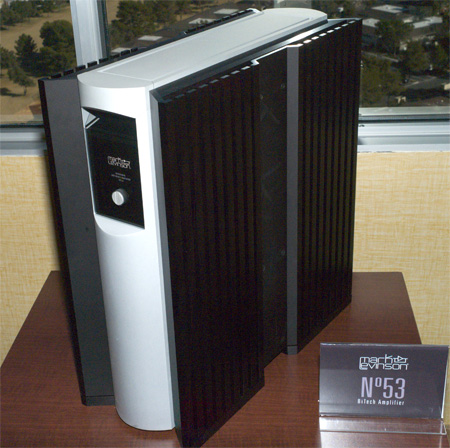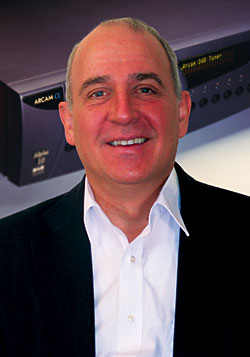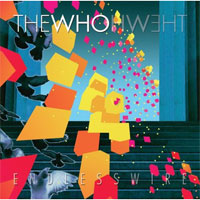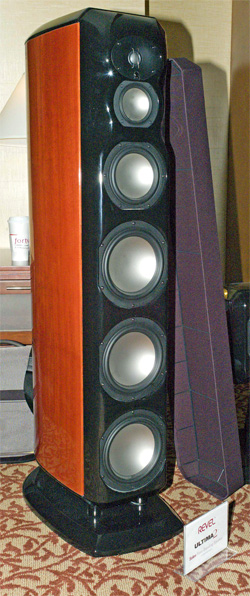LATEST ADDITIONS
John Dawson: Inventing The Future—Properly
"This won't be a short job," says Arcam's president, John Dawson (footnote 1). He's talking about the challenge of engineering the next generation of Arcam home-theater products to embrace the new high-resolution video formats. It's possibly the biggest technical challenge English company Arcam has faced since, almost exactly 30 years ago, Dawson and his original business partner, Chris Evans, launched their first product—an unpretentious, 35W hi-fi amplifier called the A&R Cambridge A60.
McIntosh MC 275 Commemorative power amplifier
The McIntosh MC 275 power amplifier has been born yet again. It's the Count Dracula of power amps. It refuses to stay dead. Introduced in 1961, the Mac 275, in its original hardwired edition, was produced until 1970. This was the amp I desired while in college but couldn't afford. I remember the Mac 275 fondly—rather like girlfriends from my college years.
Cocktail Parties, Wedding Parties, Recording Sessions
It's called the "Cocktail Party Effect." You may be immersed in the middle of a crowd of audiophiles all talking at once, but when someone says something that catches your attention, such as your name, you can focus on the sound of that person's voice and exclude the babble. The noise suppression can be 9–15dB; <I>ie</I>, the sound being concentrated on seems to be three to four times louder than the ambient noise, according to <A HREF="http://en.wikipedia.org/wiki/Cocktail_party_effect">Wikipedia</A>. The exact mechanism of the Cocktail Party Effect is not known, but it is conjectured that it has something to do with the binaural nature of human hearing: the fact that we have two ears allows us to apply spatial discrimination to what would otherwise be a jumble of sound.
Recording of January 2007: Endlesswire
<B>THE WHO: <I>Endlesswire</I></B><BR>
Universal Republic 0251709260 (CD). 2006. Pete Townshend, prod.; Myles Clarke, Bob Pridden, Sean Witt, engs. AAD. TT: 52:46<BR>
Performance ****<BR>
Sonics *****
Revel's Ultima Salon
After 10 years of selling the $15,000/pair Ultima Salon as its flagship speaker system, Revel introduced a redesign, the $22,000/pair Ultima2 Salon, at CES 2007. When I reviewed the <A HREF="http://www.stereophile.com/floorloudspeakers/96/">original Salon</A>, I was very pleased by its bass extension and dynamics. What's new in the Mk.2 Salon? It has a more conventional look, and employs all-new drivers that performed better in double-blind tests conducted by the manufacturer. While retaining the basic configuration—a four-way design with one tweeter, one midrange, one mid-woofer and 3 woofers—the Salon 2 no longer has side panels, a rear-firing port, or a rear-firing tweeter. Revel had a pair of the Ultima2 Salons playing in a demo room at the Hilton, driven by a 200Wpc Mark Levinson No.433 amplifier via Transparent speaker cable, a Levinson No.32 Reference preamplifier, and a Levinson No.390S CD processor. The loudspeaker played with all the dynamics and excellent LF response of the original Salon, reproducing the powerful deep bass of the organ accompaniment to John Rutter's <I>Requiem</I>. There was also a richness and smoothness that I found very pleasing.
Monstrous MBLs
I fell in love with the sound of the unique omnidirectional mbl tweeter when I <A HREF="http://www.stereophile.com/floorloudspeakers/643/">reviewed</A> mbl 111 loudspeaker in August 2002, so I always treat my ears by visiting the Berlin company's room the last morning of a Show. At the 2007 CES, they were showing <I>this</I>: an assault on the state of the speaker art based on two the <A HREF="http://www.stereophile.com/floorloudspeakers/1004mbl/">mbl 101E</A>'s upper-frequency modules mounted on top of one another, with separate active woofer towers. The excess of glass in the hotel suite led to a rather uptilted high-treble balanced, but the presentation was as awesome aurally as it was visually.
Balanced Audio Technology's REX Preamplifier
BAT introduced the two-chassis, $18,500 REX preamplifier at CES. The 18-tube preamplifier incorporates vacuum-tube rectifiers, C-multipliers, oil capacitors, and shunt regulators to filter the power supply's DC voltages. The control module incorporates a 140-step volume control that uses a 16-bit digital control with Vishay bulk-metal–foil resistors as pass-through devices. Each input to the preamplifier can be adjusted individually.
Cary Audio's Room: A Musical Oasis
I looked into the Cary Audio Design room in the Venetian Towers to catch up with designer Dennis Had to find out what the North Carolina company had been up to since I visited them a year ago. But he was out, so I settled back to enjoy some fine music on Dynaudio Confidence C4 speakers—favorites of mine since I <A HREF="http://www.stereophile.com/floorloudspeakers/794/">reviewed them</A> in September 2003—driven by the 10th-Anniversary Edition of <A HREF="http://www.stereophile.com/tubepoweramps/740/">Cary's CAD805</A> single-ended triode monoblock, perhaps the finest-sounding of its breed. Source was the CAD-306 SACD player, back in production after some manufacturing problems with its Sony-sourced chipset. Nice. Very nice.
Parasound Debuts John Curl-designed Preamp
While John Atkinson awaits a review sample of Parasound's just-released JC 2 two-channel analog preamp ($4000), photographed here (second from top) with Parasound president Richard Schram by Kalman Rubinson, I took the opportunity to discuss its genesis with Richard.









